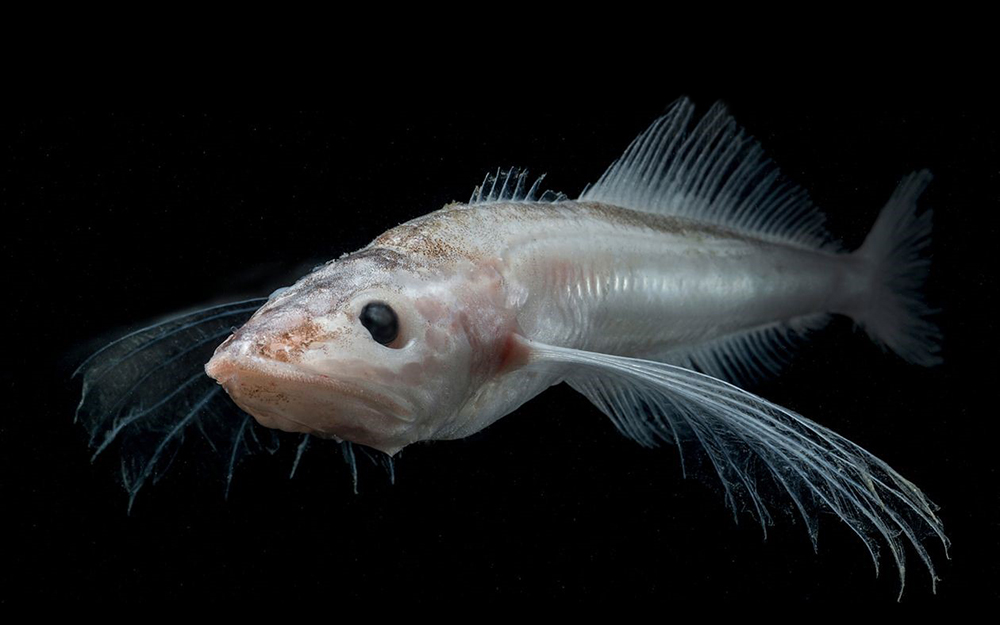Big Baikal oilfish
(Comephorus baikalensis)

Classification
General data
Comephorus, known as the Golomyankas or Baikal oilfish, are a genus comprising two species of peculiar, sculpin fishes endemic to Lake Baikal in Russia. Comephorus is the only genus in the family Comephoridae. Golomyankas are pelagic fishes which make the main food source of the Baikal seals.
Description
Comephorus have translucent bodies with no scales, but appear dull when dead. The big Baikal oilfish (C. baikalensis) can reach up to 21 cm (8.3 in) in length and the little Baikal oilfish (C. dybowskii) up to 16 cm (6.3 in). Males are smaller than females, only reaching about 2⁄3 the length.
They have long pectoral fins, and although pelvic bones are present, they lack pelvic fins. They have a strong lateral line. The lateral line system on the head consists of large cavities linked by narrow, bony bridges with small external pores. High lipid content and porous bones result in an almost neutral buoyancy and lack of swim bladder allows the fish to tolerate varying pressure extremes as they move through the water column. Over a third of the body weight (38.9%) of C. baikalensis is oil, but C. dybowskii contains far less (4.7%). It has been said that they decompose in sunlight, leaving behind only fatty oil and bones, although the accuracy of this claim has been questioned. Unusually, their eyes only contain rod cells (not cone cells), indicating a high sensitivity to light. Some of the adaptions in golomyankas resemble those seen in deep sea fish.











